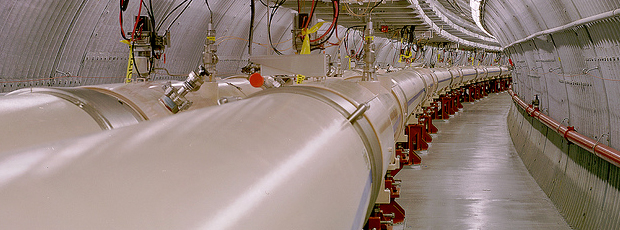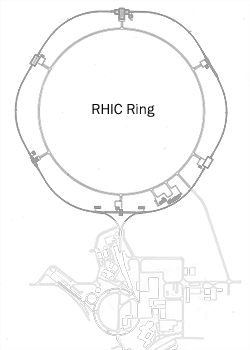




Relativistic Heavy Ion Collider

The Relativistic Heavy Ion Collider (RHIC) is a
world-class particle accelerator at Brookhaven National Laboratory where
physicists are exploring the most fundamental forces and properties of
matter and the early universe. RHIC accelerates beams of particles
(e.g., the nuclei of heavy atoms such as gold) to nearly the speed of
light, and smashes them together to recreate a state of matter thought to
have existed immediately after the Big Bang some 13.8 billion years ago.
STAR and PHENIX, two large detectors located around the
2.4-mile-circumference accelerator, take "snapshots" of these collisions
to reveal a glimpse of the basic constituents of visible matter, quarks
and gluons. Understanding matter at
such a fundamental level will teach us about the forces that hold the
universe and everything in it together. In addition, by accelerating and
colliding polarized protons, RHIC can explore how the proton gets its
spin and intrinsic magnetism from its quark and gluon constituents.

